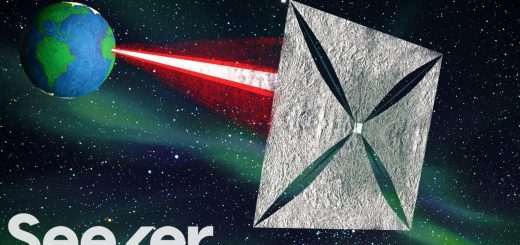China’s Plan to Conquer the Moon, Mars and More | WSJ
– Every two years,there’s a critical window to go to Mars. This summer, the planets alignedso that a spacecraft can get therewith the least amount of fuel. NASA is sending its ninth spacecraftto the red planet’s surfaceand other nations are trying to go too. One is China, which is launchingits first solo expedition. Aiming to send in one go,as much equipment as theU. S. did in several missionsto potentially find evidenceof past or present life. – That’s a whole lot of steps at once. China will really have made astand for their space agencyand for their country. – We’re in a space race todayjust as we were in the 1960s. And the stakes are even higher. – The U. S. and China are contendersfor science, profit, andpride beyond the stratosphere. And China has made a lot of progress. Since 2018, it has sent more rocketsthan any other countryand has become the second biggest spenderin space programs behind the U. S. Here’s what China is aiming for in spaceand how those plans can challenge the U. S. – In China, sinceyou have a continuanceof a Communist Party of China,its ability to focus onone mission spans 10 years. – Namrata Goswamianalyzes space programsin China and the U. S. She says China’s spaceprogram’s greatest advantageis that once the singleparty government setsa longterm goal, plansare unlikely to change. For instance, China is scheduledto set up mankind’s firstpermanent lunar base in 2036. Experts say China envisions the moonbecoming a sort of pitstop and gas station,charging other countriesto refuel spacecraftsthat need to reach farther destinations. Meanwhile, NASA, Congress,and the wider space communityhave debated for decades,whether to refocus on the moon. – In the U. S. the problem isthat you have a change in perspective,with the change in administration. Obama said that we do not needto go to the moon anymore. – We’ve been there before. – Suddenly you haveTrump come in and he arguesthat no, we need to go back to the moon. It’s the moon to Mars. – Well, thedebate continues in the U. S. ,China is breaking new ground. It landed a robotic exploreron the moon’s far side last year. Something no other countryhas ever done before. – The first step is the moon. China want to make this step very solid. And to build our abilityand to get good technologyand that we can go farther. – Long Xiao saysChina’s Chang’e 5 probe launchlater this year could returnlunar samples to earthand help advance researchinto turning them into rocket fuel. – The United States is still talkingabout getting somewhere first in space,showing off new technology. – The first woman, andthe next man on the moonwill both be American astronauts,launched by Americanrockets from American soil. – But the oneadvantage the U. S. may haveis a number of collaborations between NASAand private space companies ledby high profile billionaires. The space agency has signedbillion dollar partnershipsto do things like sending NASA astronautsand space tourists into orbit. – We have all these richguys, they love rockets. – Space expertssay the pooling of moneyand brains from variouscompanies and universities iswhat makes the U. S. program so special. As of today, the U. S. remains a model for China,which is actually learningfrom NASA’s legacy and space. Still. – The little one, just to learn from usthat we want to contributeto our new knowledgeto the human being. This is also,I think the some kindform of national pride. – In recent years,China has surpassed the West in areaslike 5G and quantum encryption. Technology that experts saycould accelerate China’s space progress. But Xiao says China has hadits fair share of failures. Almost a decade ago,the country’s first orbiterto Mars had to hitch a rideoff a Russian rocketand never made it there. This summer, Tianzhou 1will demonstrate technologythat NASA is also rollingout for the first time,a radar mounted on top of the Roverto detect subsurface water. But there’s one big difference. While NASA is partnering withthe European Space Agencyto bring back the Martiansoil and rock samplesto earth in 2026,China is doing it solo, andit’s not necessarily a choice. NASA has never worked with Chinabecause of national security concern. The U. S. barred Chinese astronautsfrom entering theInternational Space Stationand excluded China frombeing part of the Gateway,a moon orbiting space station. – There’s not a goodthing about the tensionbetween China and the United States,but I understand it toshare the technologyis harder for any country. – So instead, China has plannedits own Mars’ samplereturn mission in 2028,not far from the NASA and ISA timeline. – The U. S. does not seem to realizethat because it ban anykind of space collaborationbetween the U. S. and China,China develop its own indigenous capacity. So they turned a disadvantageinto an advantage. – In the long term,some scientists from boththe U. S. and China have saidthey hope cooperation willhelp share costs and expertise. – For science, we hopewe can share scientificresource, exploration data,and that will allowscientists to work together.













